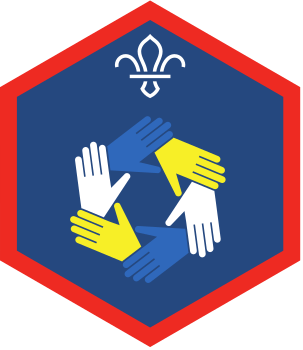
Virtual guess who
You’ll need
- Device with access to the internet
- Dressing up items (for example hats, scarves or sunglasses)
Staying safe online
This activity’s designed for you to run during an online session. Take a look at our advice on using Zoom and other popular digital platforms, as well as guidance to help everyone to stay safe online.
Make sure that the person leading the game is the meeting host and that they know how to use the waiting room function on Zoom – there’s more information on the Zoom blog.
Before you begin
- Use the safety checklist to help you plan and risk assess your activity. Additional help to carry out your risk assessment, including examples can be found here. Don’t forget to make sure all young people and adults involved in the activity know how to take part safely.
- Make sure you’ll have enough adult helpers. You may need some parents and carers to help if you’re short on helpers
Setting up this activity
- Ask everyone to come prepared with at least one item of clothing they can use to change how they look: a hat, a scarf, a pair of sunglasses, a headband or a face mask would all work well. People could even make their own props from scrap paper.
Play the game
- Gather everyone together on the virtual platform and welcome everyone. Tell everyone you'll be playing a game of virtual guess who.
- Ask everyone to mute themselves and make sure their Zoom’s on gallery mode.
- Give everyone two minutes to put on at least one item of fancy dress.
- The person leading the game should choose someone. They shouldn’t tell anyone who they’ve chosen.
- The person leading the game should say another player’s name.
- That person should unmute themselves and ask a question to help them figure out who the person leading the game has chosen. The question should be able to be answered with ‘yes’ or ‘no’ and should be based on things everyone can see. For example, they could ask ‘Are they wearing sunglasses?’ or ‘Are they wearing their hat back to front?’, but they couldn’t ask ‘What colour is their hair?’ or ‘Do they like playing rounders?’.
- Once they’ve asked their question, they should mute themselves again.
- The person leading the game should answer ‘yes’ or ‘no’ and choose someone else to ask a question.
- Everyone should keep track of the answers. When they think they know who the chosen player is, they should type their guess into the chat.
- The person leading the game should reveal who guessed correctly.
- Everyone should play again: the first player to guess correctly should become the person leading the game, and should now choose a player for everyone to guess and answer the questions.
- Give people a chance to swap or change their costumes before you play again.
Reflection
This activity was all about problem-solving while having fun. Can anyone think of a time they needed to find an answer by piecing together lots of small bits of information? For example, if someone needed to arrive at a destination by a certain time and on a fixed budget they’d need to find out about the different transport options, how long each took and how much each cost; they’d need to think about all of these pieces of information to plan the best possible route. People could take it in turns to share ideas of when problem-solving skills like this may be useful.
Safety
All activities must be safely managed. You must complete a thorough risk assessment and take appropriate steps to reduce risk. Use the safety checklist to help you plan and risk assess your activity. Always get approval for the activity, and have suitable supervision and an InTouch process.
- Online safety
Supervise young people when they’re online and give them advice about staying safe. Take a look at our online safety or bullying guidance. The NSPCC offers more advice and guidance, too. If you want to know more about specific social networks and games, Childnet has information and safety tips for apps. You can also report anything that’s worried you online to the Child Exploitation and Online Protection Command. As always, if you’ve got concerns about a young person’s welfare, including their online experiences, follow the Yellow Card to make a report.
- If people are struggling to remember the answers (or you don’t want it to be competitive), people could turn their cameras off if they’re not the chosen person and everyone could work together to narrow it down. For example, if someone asked ‘are they wearing sunglasses?’ and the person leading the game said ‘no’, everyone wearing sunglasses would turn their camera off.
- People could take it in turns to ask all of the questions and guess the person – who’ll use the fewest questions to narrow it down?
- People could jot down notes to remind themselves what’s been said (for example, wearing a hat, not wearing sunglasses).
- If you need to, you could add a rule that people can only ask questions about props and outfits – not about people’s physical characteristics or their backgrounds.
- If anyone doesn’t want to dress up or appear on camera, they could hold up a picture of a character they’ve drawn or found online and people could answer the questions based on the picture they’ve chosen.
All Scout activities should be inclusive and accessible.



